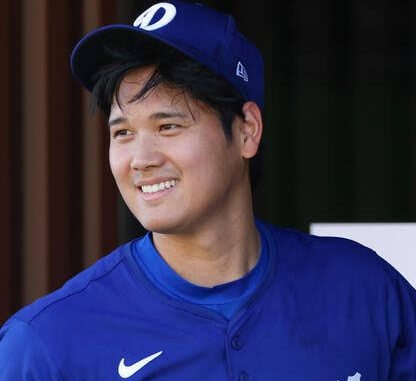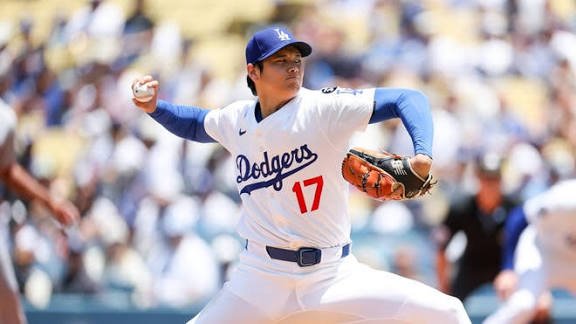
Shohei Ohtani: Strikeouts per Game | Game Log | Pitches | Rule

Shohei Ohtani is arguably the most exciting two-way player in modern Major League Baseball. A rare talent who both hits and pitches at elite levels, his strikeout rates as a pitcher provide key insights into how dominant he is on the mound. This article examines Shohei Ohtani’s strikeouts per game, explores his recent game logs, looks into pitching performances and pitch usage, and explains rules relevant to strikeouts and how they apply to Ohtani’s unique situation.
1. What Does “Strikeouts Per Game” Mean for a Pitcher
-
Definition: Strikeouts per game is usually calculated as total strikeouts divided by total games pitched (or games started). For starting pitchers, this gives an average number of batters they retire via strikeout per start.
-
Alternate metrics: K/9 (strikeouts per nine innings) is more precise because it adjusts for how many innings a pitcher throws. A pitcher who consistently throws deep into games might have more strikeouts simply by virtue of more innings.
-
Importance: For a dual‐role player like Ohtani, strikeouts per game help illustrate how effective he remains on the mound when balancing hitting duties, recovery from injury, and managing workload.
2. Shohei Ohtani’s Strikeouts Per Game – Career & Recent Trends
According to Statmuse, Ohtani has about 6.69 strikeouts per game across his pitching appearances in his MLB career.
Here are some seasonal trends:
| Season | Total Games Pitched | Total Strikeouts | Approx. Strikeouts per Game (SO/G) |
|---|---|---|---|
| 2022 | 28 | 219 | ~7.82 SO/G |
| 2023 | 23 | 167 | ~7.26 SO/G |
| 2025 | (so far) | 54 | Note: in “2025 Regular Season (LAD)” as of the data, he has 54 strikeouts in a number of games; his SO/G depends on games pitched. |
These numbers show that while his SO/G can vary year to year, Ohtani tends to deliver between ~6 to 8 strikeouts in his starts (for seasons where he has a full workload). Shohei Ohtani strikeouts per game.
3. Game Log Insights: Recent Performances
Looking at game logs helps understand fluctuations, pitch count, workload, and how he is treated by teams. Here’s what the recent logs suggest:
-
In 2025, for the Los Angeles Dodgers, Ohtani has thrown multiple starts. In some of them, he’s recorded high strikeout games (for example, 8 or 9 strikeouts in certain starts) while in others fewer, depending on length of outing.
-
One return game after Tommy John revision surgery saw him throw 28 pitches, allowing some hits/runs but also reaching near triple-digit velocity on his fastball (100.2 mph). That suggests that he is regaining form, but still under pitch count / innings limitations.
From these logs you can see patterns:
-
Strikeout numbers tend to be higher in games where Ohtani is allowed to pitch more innings (i.e. deeper into the game).
-
After long breaks or injury recovery, his outings are more cautious; pitch counts are monitored.
-
The opponent and context (home/away, rest days, weather, bullpen usage) also affect his strikeout totals.
4. Pitches: Types, Velocity, and Usage
Understanding the kinds of pitches and how Ohtani uses them helps explain how he racks up strikeouts.
-
Velocity spikes: In his return outings, he’s thrown fastballs at 100.2 mph, which is quite high. Velocity is one of the tools that help generate swing-and-miss.
-
Pitch count management: Because Ohtani is both a pitcher and a hitter, and because of previous arm injury (including Tommy John surgeries), his pitch count per game is managed more carefully. Early in his return, he’s thrown lower total pitches, not stretched to full 6- or 7-inning starts immediately.
-
Pitch mix: While specific detailed breakdowns (slider, splitter, changeup etc.) fluctuate per outing, his approach mixes high velocity fastballs with secondary pitches, which helps deception. High K/9 rates in seasons like 2022 (≈11.9 K/9 in AL) show his ability to miss bats.
5. MLB Rules Related to Strikeouts, Two-Way Players, and Pitching
Because Ohtani is a two-way player (i.e. both hitter and pitcher), some MLB rules and policies are relevant to his strikeouts/game data and usage.
-
Two-way Player Designation: MLB adopted a designation rule for two-way players (a player who both pitches and hits significantly) to clarify roster roles and restrictions. A “two-way player” must meet criteria in both pitching and batting to gain the designation (minimum innings pitched, appearances as a hitter, etc.). This affects eligibility and how he is used.
-
Pitch Count / Innings Limit after Injury: Especially after major arm surgery, teams often impose limits on innings, number of pitches per outing, and rest between starts. These limits will affect how many opportunities Ohtani has to accumulate strikeouts.
-
Rules for Strikeouts: The basic rule is every third “strike” (via swing-and-miss, looking, foul tip etc.) is a strikeout. There are rules such as dropped third strike, where if catcher drops the third strike under certain conditions the batter may try to run to first base. Strikeouts also interact with pitcher fatigue, catcher framing, etc.
-
Relief vs. Start Role: Strikeouts per game differ depending on whether he starts or comes in relief; starts tend to give more innings and more strikeouts opportunities. If he provides relief appearances, those usually give fewer strikeouts because fewer innings pitched.
-
Game log official scoring: Official game logs record IP, K, BB, Pitches thrown etc., which are used in computing K/9, WHIP, ERA etc. These stats are governed by MLB’s statkeeping rules.
6. Key Factors that Influence Ohtani’s Strikeouts Per Game
Putting together the log data, pitch usage, and rules, several factors influence his strikeout per game numbers:
-
Health / Recovery Status: Return from surgery, rest between starts, limited pitch counts reduce maximum strikeout potential per game.
-
Innings Pitched: Less time on mound = fewer strikeout chances. Longer starts generally yield more Ks.
-
Opponents & Matchups: Stronger batting lineups, hit-friendly parks, or cold weather can suppress strikeouts.
-
Pitch Quality & Variety: Velocity, movement, command, selection of secondary pitches. The better his secondary arsenal and the more deceptive the delivery, more strikeouts.
-
Workload Management: As a two-way player, balancing hitting and pitching roles can lead to fewer pitching appearances per season, hence fewer games to accumulate high strikeout totals.
7. Why Ohtani’s Strikeout Rate Matters (for Fans, Teams, Analytics)
-
Performance indicator: High strikeout numbers point to dominance and ability to overpower hitters, which is prized in modern baseball analytics.
-
Injury predictive value: If strikeout numbers drop, or velocity drops, it might signal fatigue, injury or slipping mechanics. Useful for coaching and managing rest.
-
Contract / Value: For a player like Ohtani, stellar strikeout numbers (alongside his hitting) add tremendous value.
-
Fan engagement & legacy: Fans love dominant performances; strikeouts are high-drama events. They contribute significantly to his reputation.
8. Case Study: Ohtani’s 2022 Season
2022 may be his most striking recent season in terms of strikeouts. Some key metrics:
-
Games Started: 28
-
Strikeouts: 219
-
K/9: Very high (≈11.9 in AL league leaders)
-
Strikeouts per Game: ~7.82 SO/G
In that season, he combined outstanding velocity, endurance, and pitch control. He was allowed to go deep into games, which increased his cumulative strikeouts. Shohei Ohtani strikeouts per game.
9. Recent Challenges & Recovery
After undergoing Tommy John revision surgery in September 2023, Ohtani’s return to the mound has been gradual. Key points:
-
His first start back involved 28 pitches, reaching high velocity, but only a short outing.
-
Subsequent “simulated games” and live bullpen sessions have increased pitch count, but official game logs show cautious usage.
-
Because of this, his strikeouts per game in 2025 may lag behind his peak seasons, until he is fully stretched out for longer outings.
10. What the Future Might Hold
-
If Ohtani remains healthy, gets regular starts, and continues to throw at peak velocity with good command, his SO/G could return to the 7-8 range (or more) on a season basis.
-
Pitch usage might evolve; more emphasis on off-speed or breaking pitches to mix with fastballs to avoid overuse of loud velocity, which can strain arm.
-
Strategic usage will be critical: limiting the number of pitches, ensuring rest, possibly starting fewer games but being more effective in each.
11. Conclusion
Shohei Ohtani’s strikeouts per game is one of the many lenses through which fans and analysts measure his dual-role greatness. His career average (~6.69 SO/G) is impressive, but more than that, the way he achieves those strikeouts—velocity, pitch variety, endurance—sets him apart. Recovery from injury and workload management remain key.
FAQs
Q1: How is “strikeouts per game” calculated?
A: Total number of strikeouts a pitcher has divided by number of games pitched (or games started). For more precision, analysts use K/9 (strikeouts per 9 innings). Shohei Ohtani strikeouts per game.
Q2: What is a good strikeouts per game number for a starting pitcher?
A: In modern MLB, a starting pitcher averaging 6-8 strikeouts per start is considered strong. Elite strikeout pitchers may average more, especially those with high K/9 and able to pitch deep into games.
Q3: How does being a two-way player like Ohtani affect his strikeout numbers?
A: It limits total number of pitching appearances, necessitates workload management (pitch counts, rest), and often constrains how deeply he can pitch in games, all of which can reduce strikeout totals per game compared to full-time starters.
Q4: Do pitch types affect strikeout per game?
A: Yes. Pitches with high velocity, good movement (like high-velocity fastballs, sharp breaking balls, changeups), deception, and command tend to produce more strikeouts. Effective mixing of pitch types is also important. Shohei Ohtani strikeouts per game.
Q5: What rules or restrictions impact how many strikeouts Ohtani can get?
A: Several:
-
MLB rules on two-way players set criteria for appearances and innings.
-
Health and injury recovery protocols impose pitch count / innings limits.
-
Official scoring rules (like drop third strike, foul tips etc.) affect how strikes are counted.
-
His role (starter vs. limited innings) shapes opportunity.

Leave a Reply